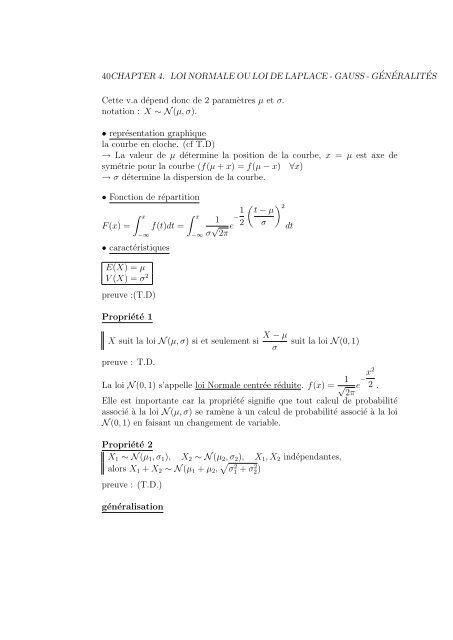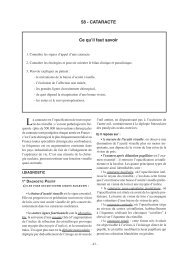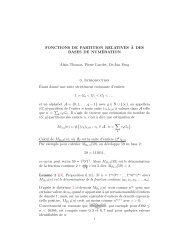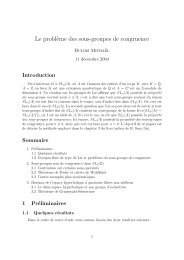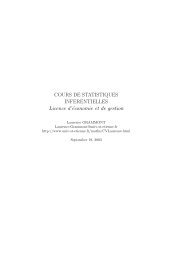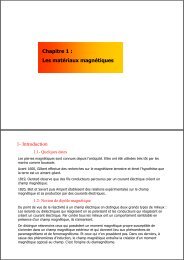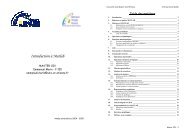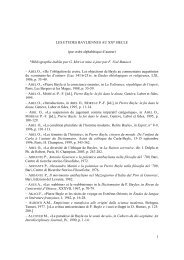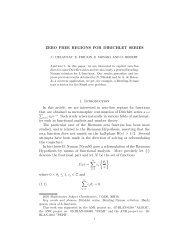COURS DE PROBABILITE 2i`eme année d'économie et de gestion ...
COURS DE PROBABILITE 2i`eme année d'économie et de gestion ...
COURS DE PROBABILITE 2i`eme année d'économie et de gestion ...
You also want an ePaper? Increase the reach of your titles
YUMPU automatically turns print PDFs into web optimized ePapers that Google loves.
40CHAPTER 4. LOI NORMALE OU LOI <strong>DE</strong> LAPLACE - GAUSS - GÉNÉRALITÉSC<strong>et</strong>te v.a dépend donc <strong>de</strong> 2 paramètres µ <strong>et</strong> σ.notation : X ∼ N (µ, σ).• représentation graphiquela courbe en cloche. (cf T.D)→ La valeur <strong>de</strong> µ détermine la position <strong>de</strong> la courbe, x = µ est axe <strong>de</strong>symétrie pour la courbe (f(µ + x) = f(µ − x) ∀x)→ σ détermine la dispersion <strong>de</strong> la courbe.• Fonction <strong>de</strong> répartitionF (x) =∫ x−∞f(t)dt =• caractéristiquesE(X) = µV (X) = σ 2preuve :(T.D)Propriété 1∫ x−∞( ) 21 t − µ−1σ √ 2π e 2 σ dtX suit la loi N (µ, σ) si <strong>et</strong> seulement si X − µσpreuve : T.D.suit la loi N (0, 1)La loi N (0, 1) s’appelle loi Normale centrée réduite. f(x) = 1 √2πe − x 22 .Elle est importante car la propriété signifie que tout calcul <strong>de</strong> probabilitéassocié à la loi N (µ, σ) se ramène à un calcul <strong>de</strong> probabilité associé à la loiN (0, 1) en faisant un changement <strong>de</strong> variable.Propriété 2X 1 ∼ N (µ 1 , σ 1 ), X 2 ∼ N (µ 2 , σ 2 ), X 1 , X 2 indépendantes,alors X 1 + X 2 ∼ N (µ 1 + µ 2 , √ σ 2 1 + σ 2 2)preuve : (T.D.)généralisation


